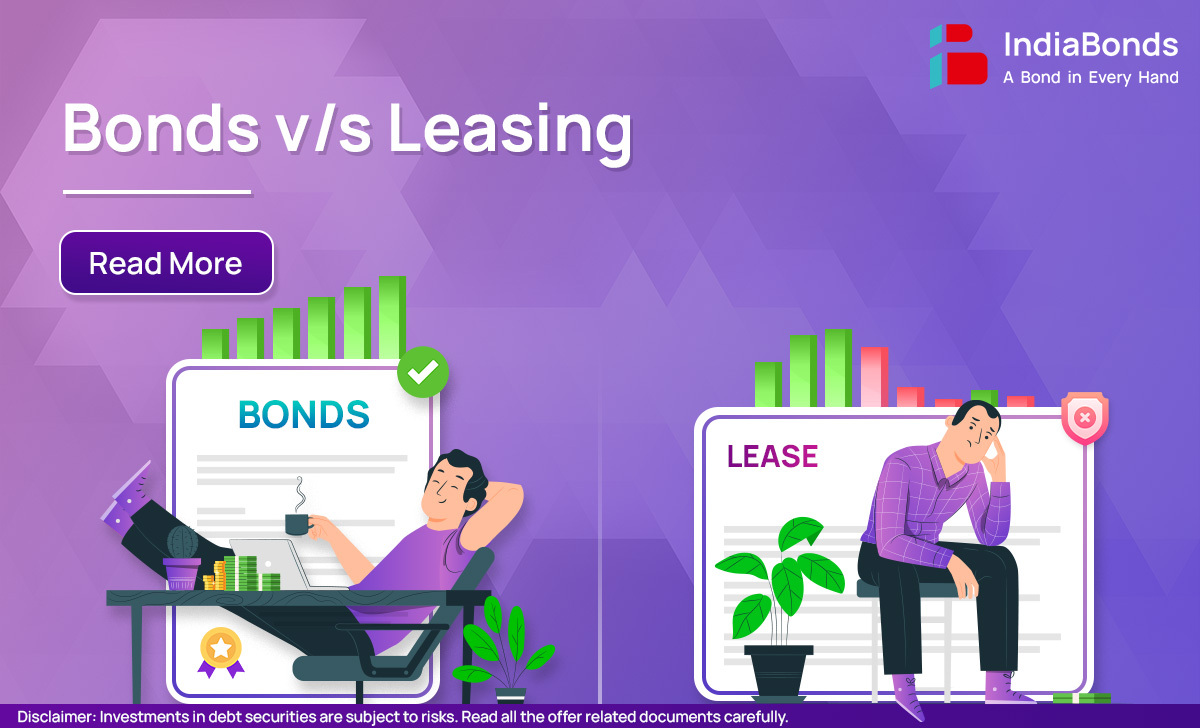
Disclaimer: Leasing is a widely accepted financial strategy for acquiring and utilizing assets without the necessity for significant upfront capital investments. Equipment leasing, a formalized business practice, has ancient roots as a concept. This article aims to explore the ‘securitization’ of the aforementioned leasing into a structured product and compare it with bonds, as both fall under the purview of fixed-income securities. It is important not to confuse this concept with traditional leasing practices.
The Indian start-up ecosystem has witnessed an exponential level of growth in the past decade. According to startupindia.gov.in, India boasts the third-largest startup ecosystem globally, with an anticipated year-over-year growth of a steady 12-15%. Venture capitalists, corporates, angel investors and now even retail investors all aspire to be a part of this booming Indian startup landscape. Among several alternatives, one of the methods to invest in a startup is known as asset leasing or lease investing.
Imagine you run a small restaurant and need a delivery van but don’t want to buy one outright due to the high upfront cost. Instead, you decide to lease the van from your friend who owns it. You sign a lease agreement; use the van for your business and make regular lease payments and your friend earns fixed regular payments. This is a simplified version of asset leasing. This approach allows startups to avoid investing in assets and incurring capital expenditures (capex), enabling them to utilize the same funds for other business operations. Now, there has been a rise in online platforms that can assist these startups beyond the conventional equity or debt financing by offering leasing services.
Currently, there exist online platforms or aggregators that function as intermediaries between companies leasing assets and investors interested in investing in these leasing contracts. For example, let’s consider a tech startup called Z that requires 20 MacBooks for its operational needs. Z approaches an online platform stating their requirements. This platform then displays Z’s financial details and the asset requirements, inviting investments. Investors have the option to invest in this listing based on their financial goals. The platform collects funds for the purpose of purchasing the MacBooks, which are then leased to Z in exchange for a predetermined fixed return. Subsequently, Z initiates monthly interest payments, which the platform distributes to the investors. At the end of the lease term, Z returns the MacBooks to the platform, which subsequently sells the assets. The proceeds from the sale are eventually distributed among the investors. An alternative leasing model exists, wherein an investor can directly lease equipment that they own to the company.
For startups, the ability to utilize non-equity capital, which is more cost-effective, results in significantly higher Internal Rates of Return (IRRs) on their core business. Capex are completely eliminated from the equation and the funding can be directed toward business operations, effectively transforming capex into operating expenses (opex). Startups encounter numerous challenges when seeking funding, but they have the option to opt for a capital structure that aligns with their feasibility and avoid the complications associated with pursuing bank financing.
Additionally, it is essential to allocate venture capital (VC) funding towards business growth rather than investing in physical assets. Leasing offers companies the advantage of operating with fewer physical assets, making them more asset-light. Furthermore, investors have the opportunity to earn returns from an alternative investment option that is not tied to traditional market fluctuations. Incorporating such an alternative asset class into their portfolio allows investors to diversify and thereby reduce risk.
Each asset class serves a distinct purpose, such as equities for wealth generation and bonds for wealth preservation. Lease investing falls under the purview of Alternative investments would be a great addition to the portfolio. However, there has been a prevailing narrative that classifies lease payments as fixed in nature, equating them to a fixed-income product. Therefore, it is crucial to delineate the distinctions between bonds and leasing. This clarification will empower investors to gain a better understanding of both asset classes and make well-informed decisions.
| Aspect | Bonds | Asset Leasing |
| Scope | Investing in fixed income securities of an entity | Renting or leasing assets to an entity |
| Return | Depends on the type of bonds; Most bonds offer Inflation and risk-adjusted returns | Relatively higher; The higher the returns, the greater the risk. |
| Risk | Wide variety available, right from G-Secs to A- rated issued by government and companies. | If the lease is backed by collateral, then the risk is minimized but still susceptible to business risk, etc. |
| Tenure | Available from short to long duration | Only short-term option available |
| Liquidity | Secondary market exists; Highly liquid and tradable | Practically no liquidity. You are locked. |
Before investing in asset leasing, an investor must (a) thoroughly comprehend the business model and (b) possess unwavering confidence that the business will prosper regardless of circumstances, thus enabling the anticipation of punctual “fixed payments.” One of the most frequently overused terms in recent years among the investment fraternity is “Passive Income,” thanks to financial influencers and proponents of the Financial Independence, Retire Early (FIRE) movement. As an investor, one should pose two critical questions: What precisely constitutes passive income and what is the true definition of passive income, as opposed to what has been promulgated as such by the so-called financial influencers?
In its purest form, passive income involves investing in a company with a robust balance sheet, an economic moat, a fundamentally sound business and other essential attributes, thereby earning stable income in the form of dividends or coupons. The key point to note is that the income sought by investors should emanate from the core operations of the business and not from the operational requirements, as is the case with leasing. Hence, it is, ideally, inappropriate to compare bonds with leasing, as the former represents a traditional investment avenue, while the latter belongs to the realm of alternative investment asset classes.




Now coming to leases being touted as ‘fixed-income products’, early-stage startups primarily rely on VC funding to meet their operational needs. However, in recent years, the country has experienced a funding winter. What happens if the core business operations are disrupted? Will they still be able to make their monthly lease payments? Only successful companies or bootstrapped businesses have managed to endure these challenges. Can you identify which startups will flourish and which ones will not? Let’s explore that question!
In 2011, a highly innovative company was founded, poised to revolutionize the education sector in India and become a prominent figure in the Indian Ed-Tech Industry. Now, as it operates within the Ed-Tech ecosystem, it is responsible for providing laptops/tablets to students as an integral part of their coursework. Since they are in the nascent stage, they lack resources and have turned to you and a couple of other investors to fund laptops. In return, they will remunerate you with monthly payments for a set period of time. Will you invest in them? Probably yes! This juggernaut eventually went on to become the first Ed-Tech company to enter the unicorn club. Fast forward to 2023, when things took a turn for the worse and now it finds itself in a precarious situation. Now, if they have a similar requirement, would you be willing to fund them?
If distinguishing between cash-burning businesses and potential unicorns were a straightforward task, everyone would be expert investors. Ultimately, while these startups may secure their funding, the aggregators will collect their platform fees, but when times get tough, who will bear the consequences? Will you receive the promised risk-adjusted, stable ‘fixed-income’? Something to ponder!
A. A bond is a debt security where investors lend money to an issuer and receive periodic interest payments, with repayment of the principal at maturity. In contrast, a lease is a contractual arrangement granting one party the right to use an asset, without ownership, in exchange for regular payments. Bonds involve debt and interest, while leases involve asset usage and rent.
Disclaimer: Investments in debt securities/ municipal debt securities/ securitised debt instruments are subject to risks including delay and/ or default in payment. Read all the offer related documents carefully.